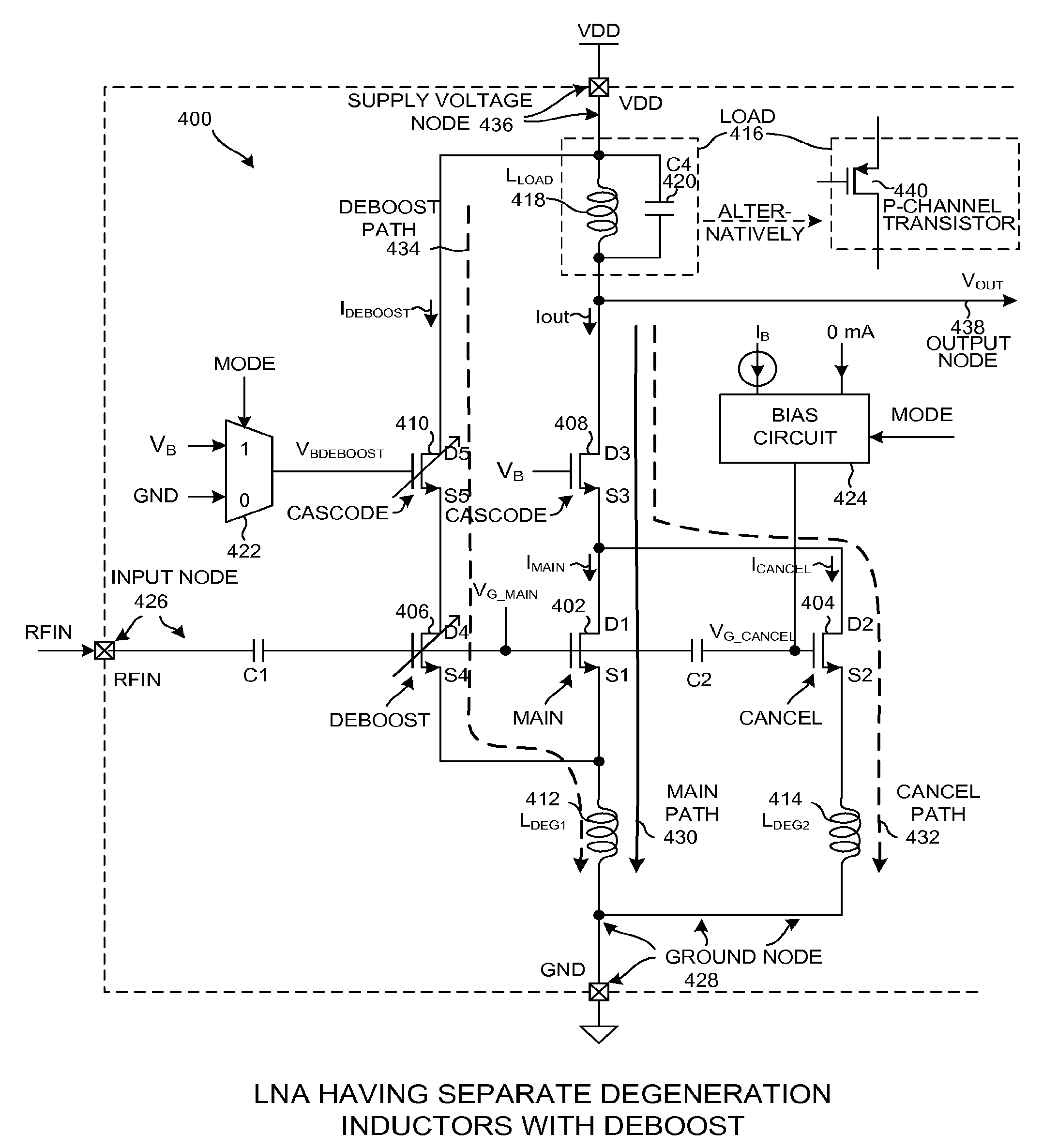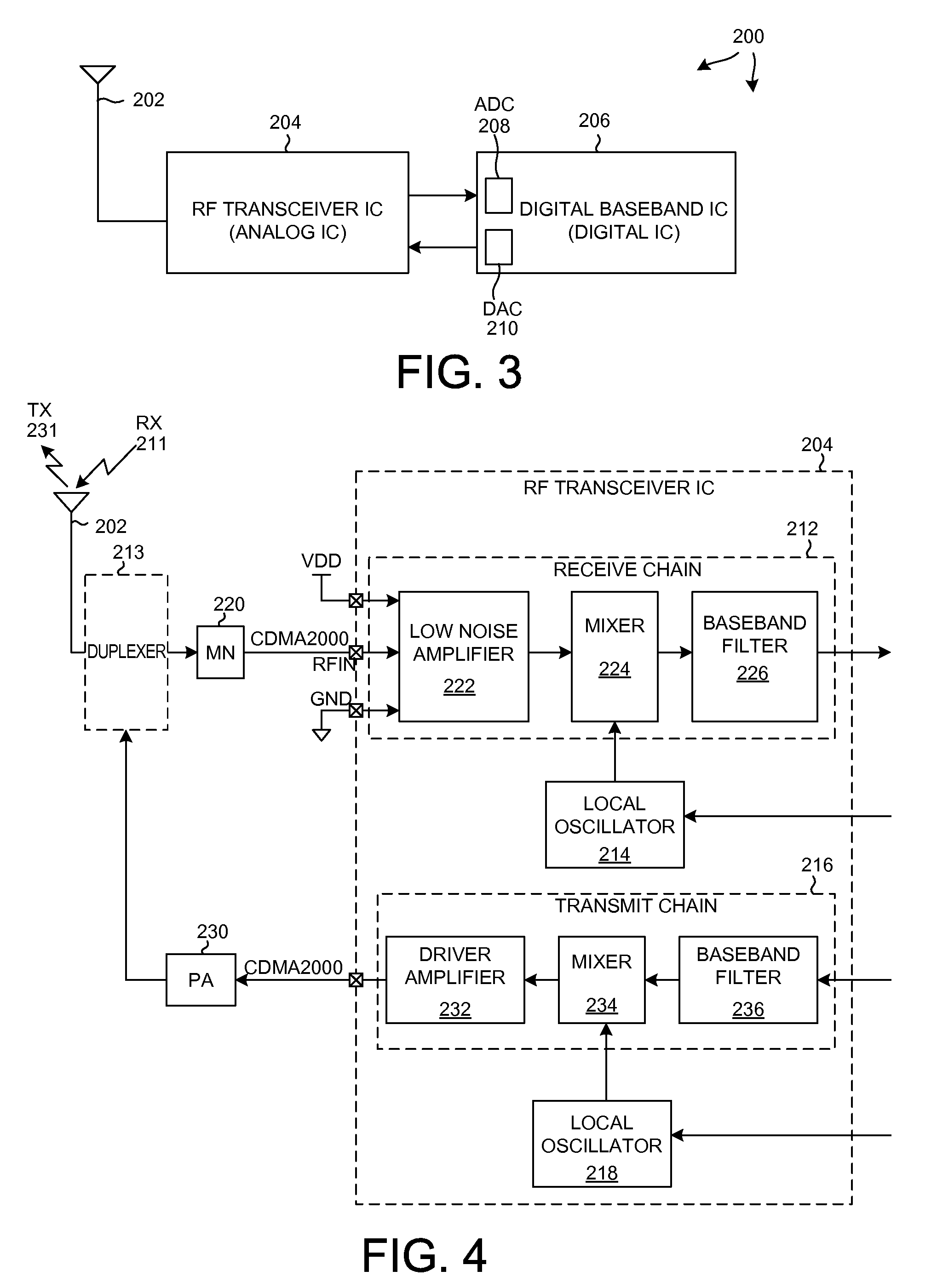Multi-linearity mode LNA having a deboost current path
a multi-linearity mode and current path technology, applied in the field of low-noise amplifiers, can solve the problems of source-degenerated lnas, poor linearity, higher power consumption, etc., and achieve the effect of facilitating one current path tuning, low noise and less iteration
- Summary
- Abstract
- Description
- Claims
- Application Information
AI Technical Summary
Benefits of technology
Problems solved by technology
Method used
Image
Examples
Embodiment Construction
[0028]FIG. 3 is a very simplified high level block diagram of one particular type of mobile communication device 200 in accordance with one novel aspect. In this example, mobile communication device 200 is a cellular telephone that uses the CDMA 2000 cellular telephone communication protocol. The cellular telephone includes (among several other parts not illustrated) an antenna 202 and two integrated circuits 204 and 206. Integrated circuit 206 is called a “digital baseband integrated circuit” or a “baseband processor integrated circuit”. Integrated circuit 204 is an RF transceiver integrated circuit. RF transceiver integrated circuit 204 is called a “transceiver” because it includes a transmitter as well as a receiver.
[0029]FIG. 4 is a more detailed block diagram of the RF transceiver integrated circuit 204 of FIG. 3. The receiver includes what is called a “receive chain”212 as well as a local oscillator (LO) 214. When cellular telephone 200 is receiving, a high frequency RF signal...
PUM
 Login to View More
Login to View More Abstract
Description
Claims
Application Information
 Login to View More
Login to View More - R&D
- Intellectual Property
- Life Sciences
- Materials
- Tech Scout
- Unparalleled Data Quality
- Higher Quality Content
- 60% Fewer Hallucinations
Browse by: Latest US Patents, China's latest patents, Technical Efficacy Thesaurus, Application Domain, Technology Topic, Popular Technical Reports.
© 2025 PatSnap. All rights reserved.Legal|Privacy policy|Modern Slavery Act Transparency Statement|Sitemap|About US| Contact US: help@patsnap.com



